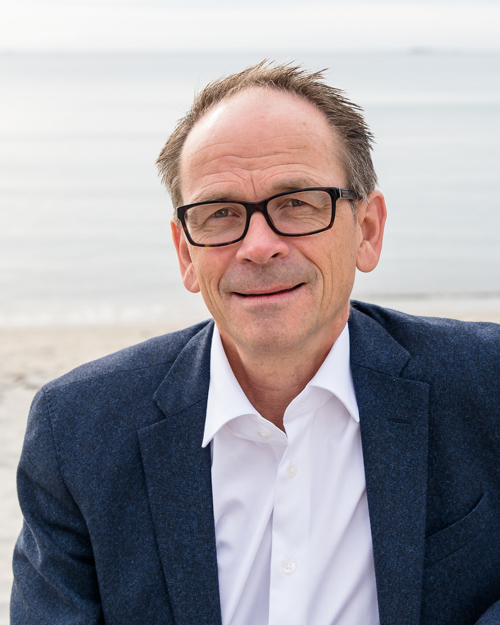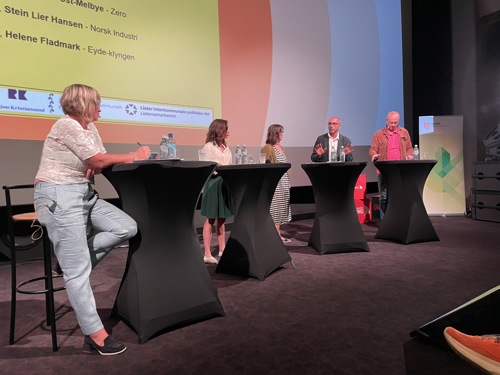ARENDALSUKA: - It´s important to achieve new framework conditions for CCS
In order for us to succeed with carbon capture, many uncertainties need to be eliminated, and more carbon capture facilities need to be built, according to the report from Prosess21. This topic was the subject of debate during Arendalsuka.
- Regarding the debate, unfortunately, direct inquiries about support for project development or, conversely, a tax on the capture of biogenic CO2 are not answered, albeit understandably. We'll have to keep our fingers crossed that the signals have been picked up and that at least something will be included in the budget proposal in October, says Lars Petter Maltby, leader of Prosess21.
View the event here:
Agder County Municipality, in collaboration with the Regional Political Industry Group in Agder, organized the event "How can CCS contribute to achieving climate goals?" during Arendalsuka on Thursday at the Sustainability Stage. It was a political gathering centered around carbon capture and storage (CCS).
Prosess21 presents solutions
To explain what is necessary to achieve this, Prosess21 has created a document describing the requirements needed to initiate more projects.
Here, a solution is outlined by raising the level of ambition for storage and streamlining the allocation of licenses for CO2 storage capacity. This will contribute to increasing competition and rapidly reducing costs. Several storage options of varying maturity are being developed in Europe.
Do we need to build more carbon capture facilities?
Many believe that in order to achieve climate goals, we need to build more carbon capture facilities. These need to be in place by 2030. The Hurdal Platform states that the government should "Facilitate CO2 capture and storage at all major incineration plants in the long run."
It takes many years to plan and build CCS facilities. If we are to have CCS at incineration plants by 2030, new framework conditions must be put in place quickly. Helene Falch Fladmark, CEO of the Eyde Cluster, led the discussion about the necessary framework conditions and when they need to be in place. The background for the discussion is the Norwegian Environment Agency's "Climate Measures in Norway towards 2030."
Over 80 specific measures are presented here to ensure that Norway reaches its climate goals by 2030.
Many uncertainties need to be addressed
Out of all these measures, carbon capture in industry and waste incineration constitutes the largest contribution in total. This assumes that multiple carbon capture projects are realized in addition to Langskip. For this to happen, many uncertainties need to be addressed for those who will make investment decisions. In other words, creating predictable framework conditions and motivating companies to develop the projects further. It takes 3-4 years to build a facility and at least 1.5 years to plan. Hence, the urgency.
Participants in the panel:
Arne Thomassen, County Mayor, Agder County Municipality
- Maria Varteressian, Political Advisor, Ministry of Climate and Environment
- Anne Marit Post-Melbye, Head of Industry, Zero
- Stein Lier-Hansen, Chief Executive Officer, Norwegian Industry
- Shahzad Rana, Central Board Member, Conservative Party (Høyre)
- Lars Petter Maltby, CEO, Prosess21
- Audun Aspelund, Chairperson of the Board, Forus Energigjenvinning
- Helene Fladmark (moderator), CEO, Eyde Cluster
HVA SKJER
Se hele kalenderen >-
ARENDALSUKA: Prosessindustrien: Norges bidrag til Europas sikkerhet!
Vitensenteret (VitenUstillingen) -
ARENDALSUKA: Get-together i regi av NEW Node Eyde Women
Kystveien 2. 4841 Arendal, terrassen i 4.etg (Eyde-klyngens lokaler) -
ARENDALSUKA - Global Outlook 2025
Arendal kulturhus, Store Torungen -
ARENDALSUKA: Batterier – Beredskap og bærekraft i en urolig tid
Vitensenteret (VitenUstillingen) -
Arendalsuka: Industrimingling med Prosess21
VitenUtsillingen, Kystveien 2




